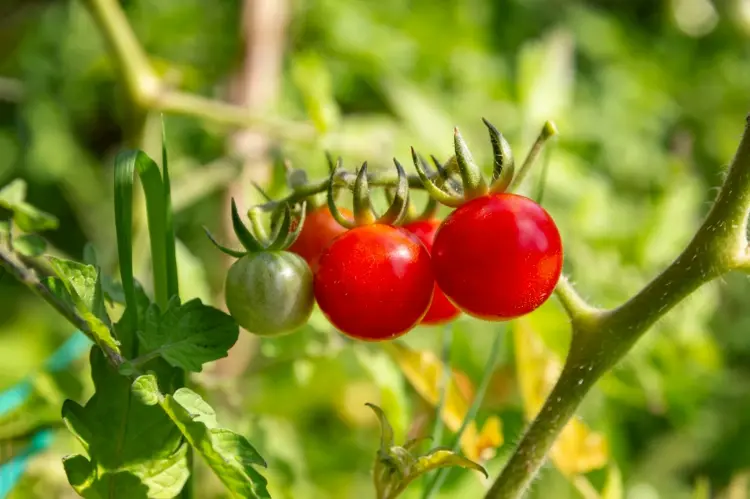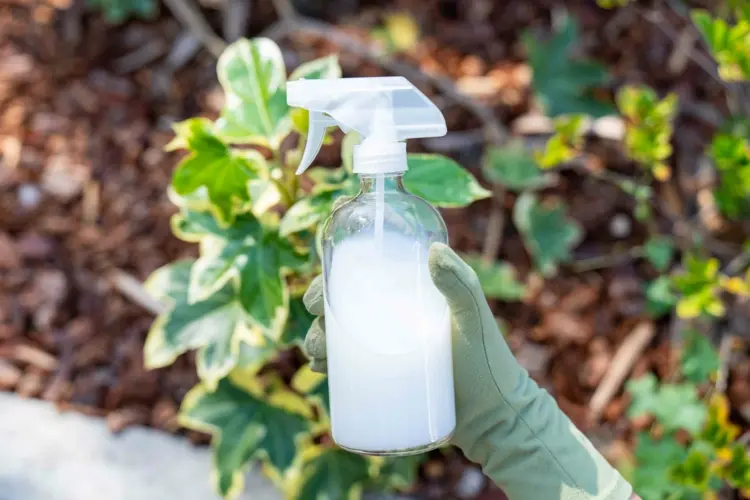Why and how often to water tomatoes with milk? What are the benefits ? What it is good for? Advantages, Disadvantages, Recipe and Instructions
Every hobby gardener is probably familiar with the usual miracle cures such as nettle manure for fertilization or dishwashing liquid against pests. And yet, there are so many more useful home remedies that are either underestimated or even unknown. Having already introduced you to the benefits of salt water for fertilizing tomato plants, we would like to draw your attention to another promising remedy – milk. What it is good for, how exactly you use it and how often to water tomatoes with milk? Let’s find out!
What Are the Benefits of Milk and Water to Tomatoes?
One might expect that the use of this rather perishable product would lead to unpleasant odors after a short period of time. However, when used properly, this is not the case. What are the benefits of watering tomatoes with milk?
- Milk contains many useful nutrients, including proteins that tomato plants can absorb through their roots. The result is terms of both the root system and above ground parts of the plant.
- The quality of the soil in general is improved.
- If you also spray water with the milk on the plants, this will act against rot caused by molds (e.g. against brown rot or root rot) and prevent pest infestation with aphids, for example.
The milk mixture provides the plants with:
- Calcium
- Nitrogen
- Phosphorus
- Beneficial bacteria that improve nutrient absorption
- A more balanced pH of the soil (if it is rather acidic)
Important: Milk does not contain everything that tomato plants need to thrive. So it should neither replace normal irrigation water nor special tomato fertilizer, but only serve as an additive.
Also read: What Is the Best Mulch for Tomatoes? 6 Top Options to Consider
Water Tomatoes with Milk – Here’s How It Works
You must not use the milk directly, but prepare a solution with water. There are also some things to consider regarding the frequency of application and the manner in which it is used. Take skim milk, because the plants cannot process the fat. Here’s what you should know:
Prepare the Solution for Watering
As you know, milk contains acid (lactic acid). If you were to apply it directly, it could do more harm than good. That is why milk is diluted with water. To do this, mix 4 parts water with 1 part milk. So if you use 1 cup of milk, mix it with 4 cups of water. You could also try a 1:6 ratio to start with and see if your plants can tolerate the product (especially on more sensitive plants, tomato plants shouldn’t be a problem).
- Mix water and skimmed milk in a ratio of 1:4 or 1:6.
- Pour the resulting water around the plant and directly onto the soil to use the milk as a fertilizer for tomatoes.
- Try not to wet the plant itself to avoid sun burns.
- In the following week, check the watered plants from time to time to see if they tolerate the remedy.
When you water tomatoes with milk, never use spoiled milk, always use fresh! Vegetable milk is unsuitable.
For seedlings, dilute the mixture even more!
Also read: What Is Heirloom Tomato and How to Grow Them – All You Need To Know!
How Often Should You Water Tomatoes with Milk?
How often do you need to water tomatoes, so that the milk fertilizer can do its job without causing any damage?
You can fertilize your tomatoes with milk every three to five weeks. One reason for this is that there is a risk of overfeeding the plants. Also, if you water tomatoes with milk too often, the roots can suffocate due to the formation of a milk film, as we explain below.
Also read: Which Plants Can Be Watered with Milk? Why? 5 Unexpected Indoor Species That Need More Calcium
What Are the Disadvantages of Watering Tomatoes with Milk?
Watering and fertilizing your tomatoes with milk can also have some disadvantages. What are they?
- Often the whole thing smells a little, although only temporarily.
- The wrong concentration can damage the roots and lead to the death of the plant.
- Spraying the upper parts of the plant is effective against fungi, but there is also a risk of promoting the same with this increased humidity, which is why it is not recommended. And tomatoes don’t like being watered from above anyway.
- Frequent watering of tomatoes with milk suffocates the roots, so to speak, as a film forms around them. There should be enough normal watering, so that residues are always washed away very well.
Also read: How to Get Rid of Aphids on Tomatoes: These Home Remedies Are the Fastest Help Against the Pests!






